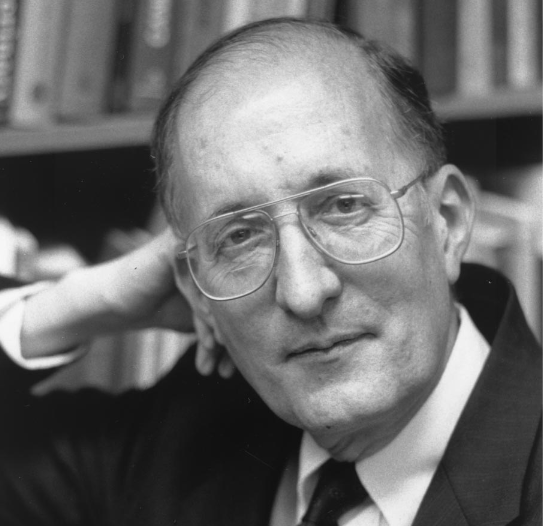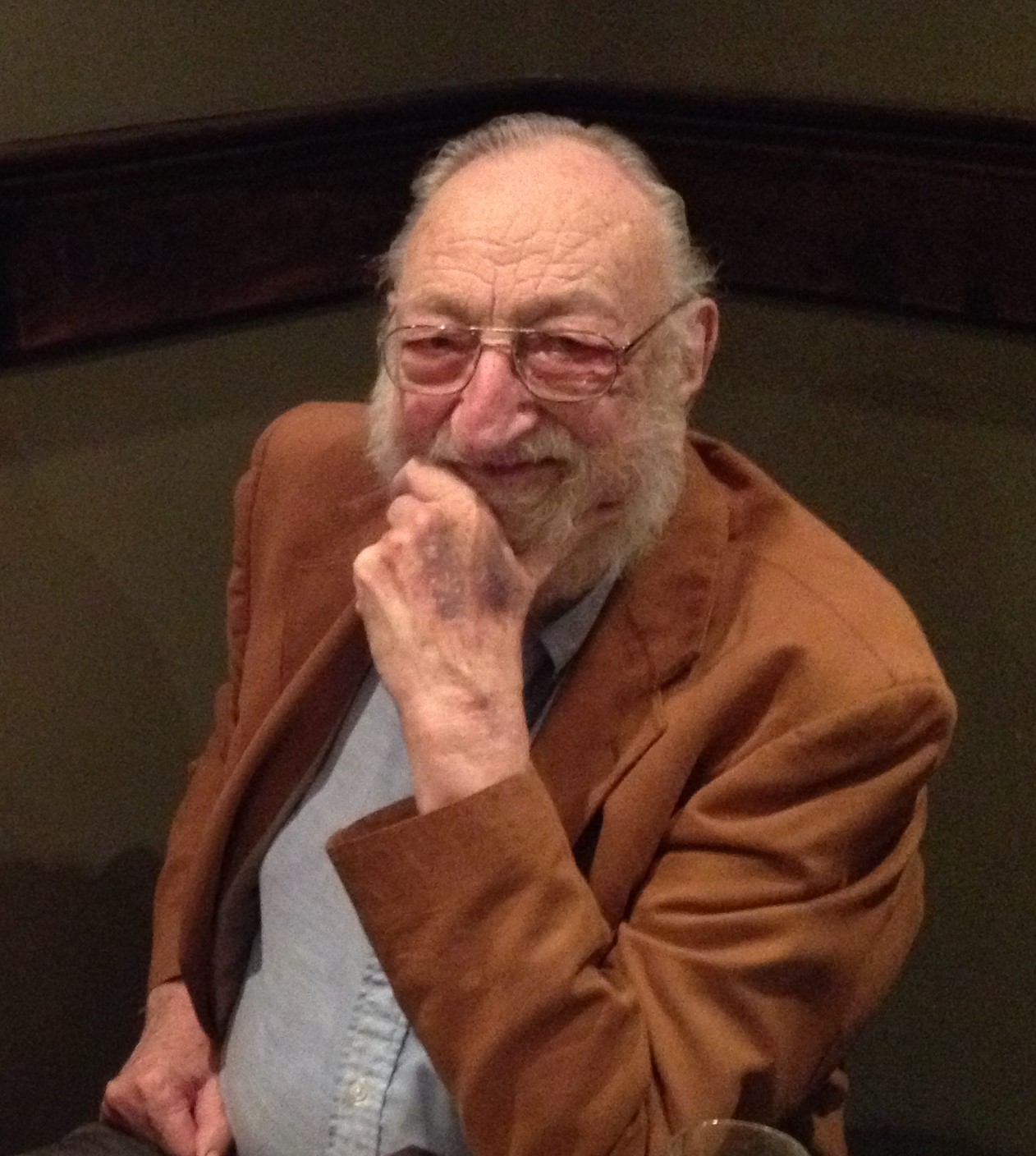This past autumn, 2 longtime leaders in science editing died, each in their late nineties. Each had played prominent roles in what is now the Council of Science Editors (CSE), serving in the post now termed president and receiving what is now called the CSE Award for Meritorious Achievement. Each had witnessed and contributed to the developments in science editing in the second half of the 20th century. Each also had mentored and educated editors and authors, both personally and through their writings. This article pays tribute to these 2 editors: Edward J Huth and Robert A Day.
Edward J Huth (1923–2021)

Edward J Huth was chairman of CSE’s predecessor, the Council of Biology Editors (CBE), in 1973–1974. He received the CBE Meritorious Award in 1987. His acceptance address1 included a call for “a single society for editors of all sciences”—a vision fulfilled in 2000, when CBE became CSE.
In keeping with this vision, Huth chaired the CBE style manual committee when it produced the edition that was the first to be titled Scientific Style and Format.2 Whereas previous editions had focused on the biological sciences, this much-expanded edition, published in 1994, encompassed the physical sciences as well. Huth also was a founding member of the International Committee of Medical Journal Editors, which developed the Uniform Requirements for Manuscripts Submitted to Medical Journals.3
On a lighter note, Huth coined the term salami science,4 used to designate reporting different parts of a single study in separate papers to inflate one’s publication record. And it was observed that “[r]ed editing pens were always scattered about his office and home.”5
Huth graduated from the University of Pennsylvania School of Medicine in 19475 and completed his internship, residency, and nephrology fellowship there.4 Huth became assistant editor of Annals of Internal Medicine in 1960 and associate editor in 1965; he then was editor of the journal from 1971 to 1990.6
After retiring from Annals of Internal Medicine, Huth became the first editor of the pioneering online journal Current Clinical Trials.7 He also continued to write about science editing and related subjects for 19 years.6 His 2007 Science Editor article “Editor, Keep Your Eyes Open to the Rest of the World”8 describes 3 instances, all from his editorial career, in which attentiveness to outside voices led to important editorial improvements.
Huth’s publications include the books Writing and Publishing in Medicine9 (which in previous editions was titled How to Write and Publish Papers in the Medical Sciences) and Medical Style & Format: An International Manual for Authors, Editors, and Publishers.10 PubMed lists some 90 articles by Huth, largely on editorial topics.
My recollections of Huth’s kindness and commitment date back to the 1970s, when I was a medical student. A dean suggested that I contact Huth because of my interest in an editorial career. Huth arranged for me to visit the Annals editorial office and meet with him. Years later, when I was editor of Science Editor, he remained generous with his time and wisdom as a contributor to the Council’s periodical.
Robert A Day (1924–2021)

Robert A Day was chairman of CBE in 1977–1978. He received the organization’s Meritorious Award in 1988. In keeping with his distinctive style, his acceptance address11 had a historical bent and began and ended with a joke.
Day joined CBE in 1960. Two years later, he chaired the local arrangements committee for the annual meeting (total registration: 32). He was one of the first managing editors in the organization, which at that time consisted almost solely of scientific editors. He recalled that the 1975 annual meeting included vigorous debate over membership criteria; those favoring inclusiveness won, and the membership requirements were revised to allow all types of editors, including copyeditors, to join.12
Day came to science editing from librarianship, having earned a graduate degree in the field and worked as librarian-editor at the Institute of Microbiology at Rutgers University.13 For 19 years, starting in 1961, he directed the publishing program at the American Society for Microbiology. He then became director of ISI Press.14 From 1986 until his retirement in 1999, he was a professor of English at the University of Delaware, where he taught scientific and technical writing and editing.15
Day’s publications include the book How to Write and Publish a Scientific Paper, which first appeared in 197916 and since his retirement has had coauthored editions, including one now in press.17 (Much has changed since the first edition, which had a section on how to package and mail a manuscript and a chapter on how to order and use reprints.) He also wrote Scientific English: A Guide for Scientists and Other Professionals, the most recent edition of which was coauthored by daughter Nancy Sakaduski.18
As noted in his obituary,14 “Bob was a big man with a big heart and a real zest for life.” He excelled at, and clearly relished, both the intellectual and the interpersonal aspects of being an editor. A favorite memory of him comes from his ISI Press days, in the early 1980s, when he was waiting for me to submit the manuscript for my first book.19 At the time I was an assistant professor subsisting on a meager salary. During a visit to town, Bob treated me to a dinner (complete with chocolate souffle) that probably cost more than I spent on groceries for the week. I returned to my writing with new enthusiasm—and maintained that enthusiasm in our subsequent collaborations.
Edward J Huth and Robert A Day saw many changes during their careers, which began in the paper-and-pencil days of science editing, and they did much to advance CSE and the field. I was fortunate to know both of these members of the Greatest Generation. May we maintain their legacy.
References and Links
- Huth EJ. CBE will not be saved by grace alone, good works are needed. CBE Views. 1987;10:55–57.
- Style Manual Committee, Council of Biology Editors. Scientific style and format: the CBE manual for authors, editors, and publishers. 6th ed. New York: Cambridge University Press; 1994.
- Huth EJ, Case K. The URM: Twenty-five years old. Sci Ed. 2004;27:17–21.
- Case K. Introduction of Meritorious Award winner. CBE Views. 1987;10:54.
- Miles G. Edward J. Huth, doctor, editor, and author, dies at 98. Philadelphia Inquirer. 2021 November 11. [accessed March 6, 2022.] https://www.inquirer.com/obituaries/edward-huth-obituary-penn-medical-journal-20211111.html.
- Obituaries: Edward J. Huth, MD, MACP. ACP Internist. [accessed March 6, 2022.] https://acpinternist.org/archives/2022/01/obituaries.htm.
- Palca J. New journal will publish without paper. Science. 1991;253:1480.
- Huth EJ. Editor, keep your eyes open to the rest of the world. Sci Ed. 2007;30:131–133.
- Huth EJ. Writing and publishing in medicine. 3rd ed. Baltimore: Williams & Wilkins; 1999.
- Huth EJ. Medical style & format: An international manual for authors, editors, and publishers. Philadelphia: ISI Press; 1987.
- Day RA. Scientific communication: The first 35,000 years. CBE Views. 1988;11:59–61.
- Meyers B. A polling of our past presidents. Sci Ed. 2007;30:41–42.
- Pollock G. Introduction of the Meritorious Award winner. CBE Views 1988;11:58–59.
- Obituary: Robert A. Day. Delaware Online. [accessed March 6, 2022.] https://www.delawareonline.com/obituaries/wnj117781.
- UDaily Staff. In Memoriam: Robert A. Day. UDaily. 2021 November 18. [accessed March 6, 2022.] https://www.udel.edu/udaily/2021/november/in-memoriam-robert-day/.
- Day RA. How to write and publish a scientific paper. Philadelphia: ISI Press; 1979.
- Gastel B, Day RA. How to write and publish a scientific paper. 9th ed. Santa Barbara, CA: ABC-CLIO; in press.
- Day RA, Sakaduski N. Scientific English: A guide for scientists and other professionals. Santa Barbara, CA: Greenwood; 2011.
- Gastel B. Presenting science to the public. Philadelphia: ISI Press; 1983.
Barbara Gastel is a professor at Texas A&M University, where she coordinates the graduate program in communicating science. She was editor-in-chief of Science Editor from 2000 to 2010.
Opinions expressed are those of the authors and do not necessarily reflect the opinions or policies of the Council of Science Editors or the Editorial Board of Science Editor.
